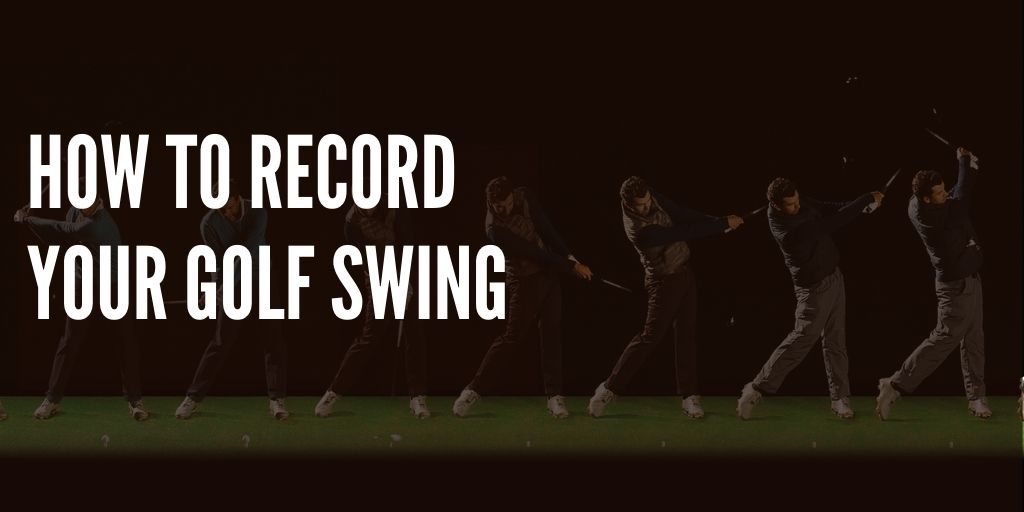
For nearly every golfer out there, the swing is always a work in progress. Regardless of level, there tends to be something to improve or a particular position you’re trying to hit. Even if we believe we have a decent feel for our swing, our perception is most likely quite different from reality. As they say, "feel is not real." For this reason, a crucial part of any golf practice routine should be recording your swing on video. Such recordings are a standard part of golf lessons these days. This article will go over some basics of recording your golf swing and getting the most out of it.
Swing Recording Basics
Most likely, you already have the essential tool for getting a good swing video in your pocket already; a smartphone. In recent years, most smartphones have a camera more than capable of taking useful swing videos and access to apps to help the process. Besides the phone itself, it helps have a small tripod to hold the phone steady at the desired angle. There are plenty of golf-specific devices available on Amazon
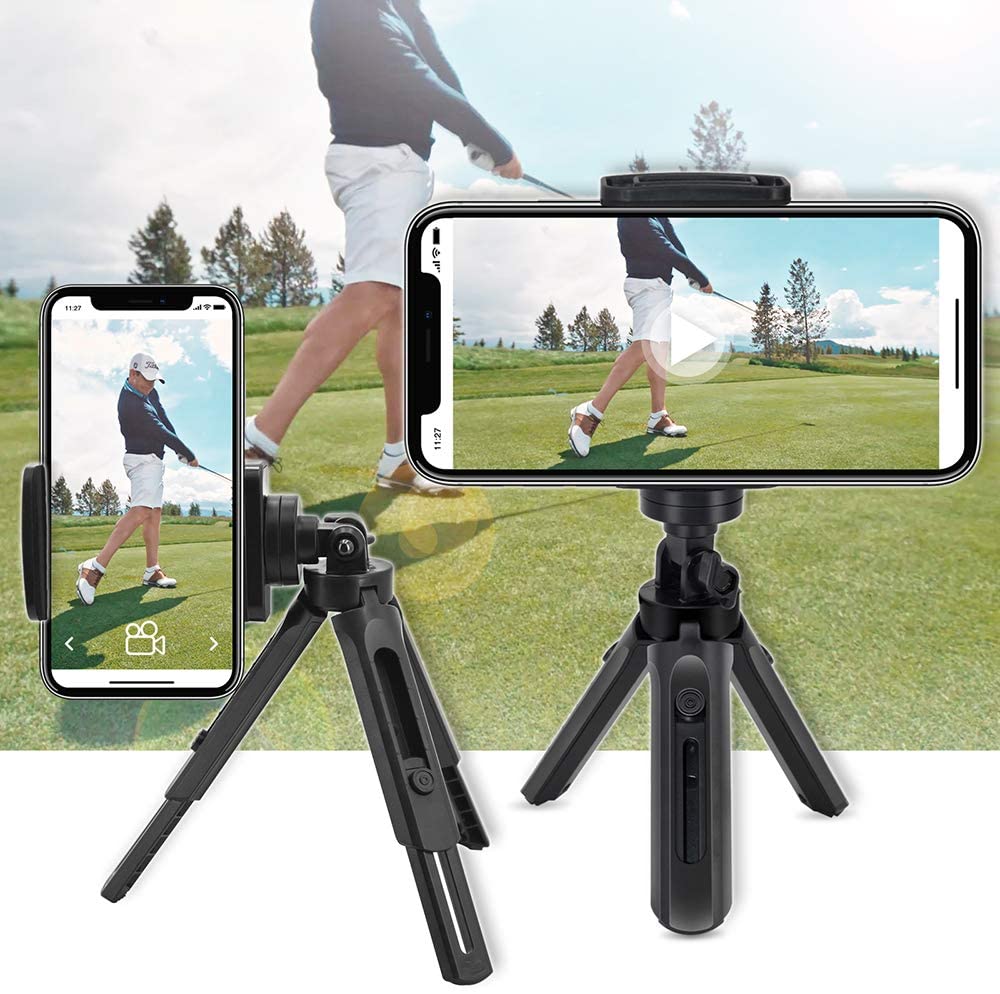
Like taking any video, you’ll want to record your swing in a well-lit area and should avoid having the camera pointed at the sun or other light source. Additionally, you’ll want to make sure that you have enough space around you to fit your full swing within the frame. There are two critical angles for the golf swing you’ll want to be sure you can get, down-the-line and face-on.
Down the Line
Down-the-line video is taken directly behind you, with the camera likely six feet or more from your stance. This angle is essential for understanding your swing plane, so if the camera is not in line with the swing, you won’t get useful information from it.
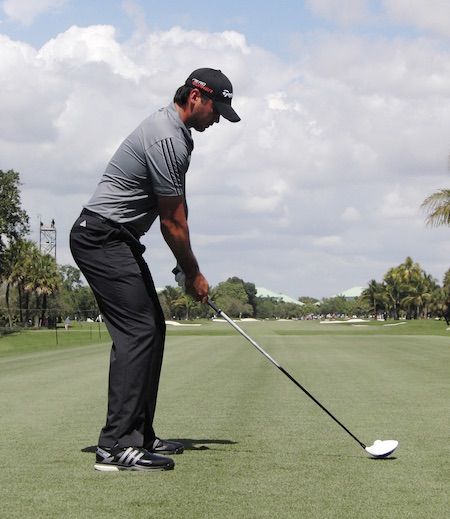
Orientation is crucial, so you'll want to make sure you are using an alignment stick for a reference point. Also, having the camera level to your hands is the recommended position.
This video can help explain more with important visuals:
Face On
Face-on swing recordings are taken with the camera parallel to you, in line with the ball. Again, you’ll likely need the camera to be at least six feet or more from you to fit everything in the frame. Face-on video will help you see hip sway, shaft lean at impact, and several other important swing characteristics.
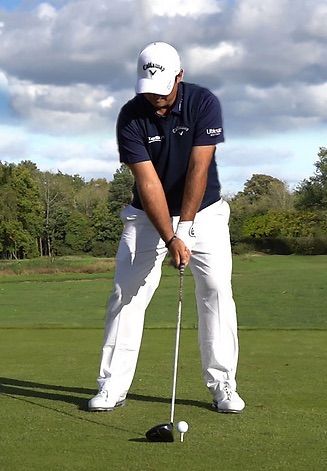
You'll want your camera at a right angle to the target line, and in line with the center of your body.
If you are recording your swing on your own, it will take some trial and error to learn the proper positioning and angles for your camera and surroundings, so having someone else check the setup can help.
Additionally, you’ll want to be sure to have your camera recording at the highest definition and FPS (frames-per-second) possible. For my iPhone, for example, this is 60fps. Recording at lower quality can make swings appear blurry, and you’ll miss a lot of information.
Last, while your phone’s rear camera is likely better than the front-facing camera or a tablet, you can definitely use either of these with the screen visible to you. That way, you can use them to check positions at the moment, acting like a mirror for your swing.
Using Apps for Swing Analysis
A key advantage to using your smartphone to record your swing instead of a traditional camera is the ability to use apps to help you evaluate your swing. These apps can either be used instead of the default camera app to record the swing or can import the video after. For iPhone users, a recommended app is Hudl Technique. This app is used by athletes and coaches in various sports, and the free version provides a lot of tools for swing analysis.
For Android users, V1 Golf provides the same type of functions and is utilized by a large number of teaching pros.
Once you have your swing recording loaded into the app, you can utilize the drawing tools to give you feedback while watching the video. For down-the-line swing recordings, here are a few lines and shapes to consider:
- Circle around the head - While the cliche “keep your head down” is a myth, moving around too much during the swing can be harmful.
- Line down the spine - Rotating around the spine is essential for consistent contact, so this line can help diagnose an early extension.
- Line up the shaft and past the shoulders - A line from the bottom of the shaft and extending it beyond your body helps visualize the swing plane and show what you’re doing with your swing to plane.
- Circle the ball - At full speed, it can be difficult to see where the clubhead is returning to the ball at impact, so a circle around the ball can help make it clear.
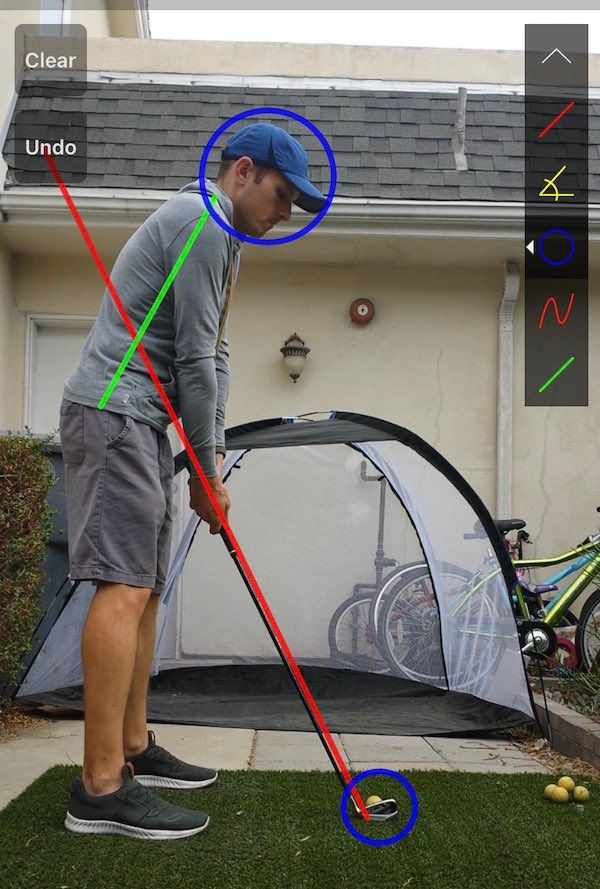
Here are some lines to draw for face-on recordings:
- Vertical lines from the back foot and front foot - These lines will help you visualize hip sway as your hips shouldn’t be going back the trail foot line on your backswing or be past the front foot line at impact.
- Vertical line up from the ball - Drawing a line straight up from the ball and through your body will give a great deal of information, first as a reference for ball position. Additionally, it will provide a clear indicator if your hands were ahead of the clubhead at impact and if your upper body stayed behind the ball.
There are several other ways to utilize lines and shapes on the screen, and ideally, you can work with a teaching pro to get the best information about your swing.
Save Your Swings
While we might not like looking back on swings with poor technique and apparent flaws, the best way to measure your improvement is to save these swing videos and compare yourself to them to see the progress you’ve made. While comparing your swing to the pros is of limited value (because everyone’s swing is unique), having a library of your own swings, both good and bad, give the best reference points. The apps above allow you to compare swings side-by-side within their paid versions, and this can definitely provide a lot of value for analyzing your recordings.
In the end, these videos will be essential for you to know what you’re doing with your swing rather than just what you think is happening. While a lot of golf is based on feel, the information these recordings provide will help you develop this feel in the right way. You can trust that the tour pros are recording their swings frequently, so you definitely should too.
Have some swing video tips or recommendations? Start a conversation over at the Practical Golf Forum to share.
We care about the protection of your data Read our Privacy Policy